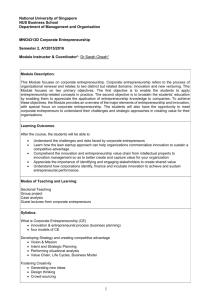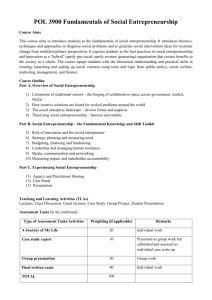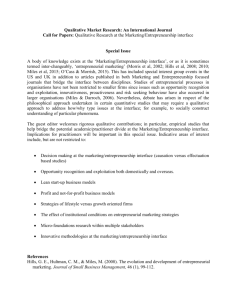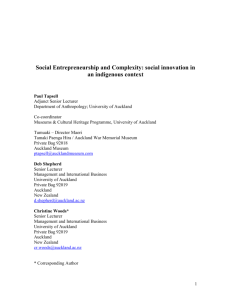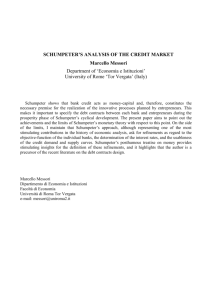Chapter 17: Industrialization, Entrepreneurship and Urban Growth
advertisement
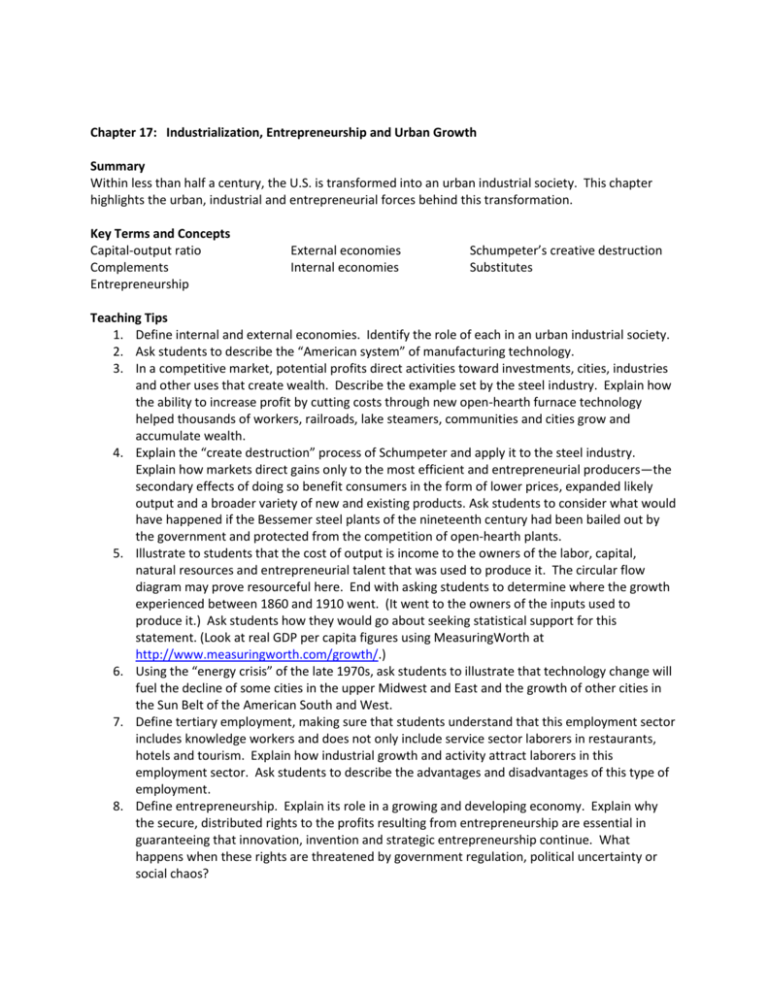
Chapter 17: Industrialization, Entrepreneurship and Urban Growth Summary Within less than half a century, the U.S. is transformed into an urban industrial society. This chapter highlights the urban, industrial and entrepreneurial forces behind this transformation. Key Terms and Concepts Capital-output ratio Complements Entrepreneurship External economies Internal economies Schumpeter’s creative destruction Substitutes Teaching Tips 1. Define internal and external economies. Identify the role of each in an urban industrial society. 2. Ask students to describe the “American system” of manufacturing technology. 3. In a competitive market, potential profits direct activities toward investments, cities, industries and other uses that create wealth. Describe the example set by the steel industry. Explain how the ability to increase profit by cutting costs through new open-hearth furnace technology helped thousands of workers, railroads, lake steamers, communities and cities grow and accumulate wealth. 4. Explain the “create destruction” process of Schumpeter and apply it to the steel industry. Explain how markets direct gains only to the most efficient and entrepreneurial producers—the secondary effects of doing so benefit consumers in the form of lower prices, expanded likely output and a broader variety of new and existing products. Ask students to consider what would have happened if the Bessemer steel plants of the nineteenth century had been bailed out by the government and protected from the competition of open-hearth plants. 5. Illustrate to students that the cost of output is income to the owners of the labor, capital, natural resources and entrepreneurial talent that was used to produce it. The circular flow diagram may prove resourceful here. End with asking students to determine where the growth experienced between 1860 and 1910 went. (It went to the owners of the inputs used to produce it.) Ask students how they would go about seeking statistical support for this statement. (Look at real GDP per capita figures using MeasuringWorth at http://www.measuringworth.com/growth/.) 6. Using the “energy crisis” of the late 1970s, ask students to illustrate that technology change will fuel the decline of some cities in the upper Midwest and East and the growth of other cities in the Sun Belt of the American South and West. 7. Define tertiary employment, making sure that students understand that this employment sector includes knowledge workers and does not only include service sector laborers in restaurants, hotels and tourism. Explain how industrial growth and activity attract laborers in this employment sector. Ask students to describe the advantages and disadvantages of this type of employment. 8. Define entrepreneurship. Explain its role in a growing and developing economy. Explain why the secure, distributed rights to the profits resulting from entrepreneurship are essential in guaranteeing that innovation, invention and strategic entrepreneurship continue. What happens when these rights are threatened by government regulation, political uncertainty or social chaos? Websites and sources W. Michael Cox and Richard Alm. "Creative Destruction." The Concise Encyclopedia of Economics. 2008. Library of Economics and Liberty. Retrieved December 10, 2009 from the World Wide Web: http://www.econlib.org/library/Enc/CreativeDestruction.html Lawrence H. Officer and Samuel H. Williamson. "Annualized Growth Rate of Various Historical Economic Series." MeasuringWorth. 2009. Retrieved December 13, 2009 from: http://www.measuringworth.com/growth/ Measuring Worth is a website where instructor and student can ask questions of comparative value covering prices, purchasing power, earnings, real GDP per capita, interest rates, exchange rates, wages and other economic variables. The calculators permit the conversion of past values into current values (and vice versa). Visit: http://www.measuringworth.com/growth/ for details.



